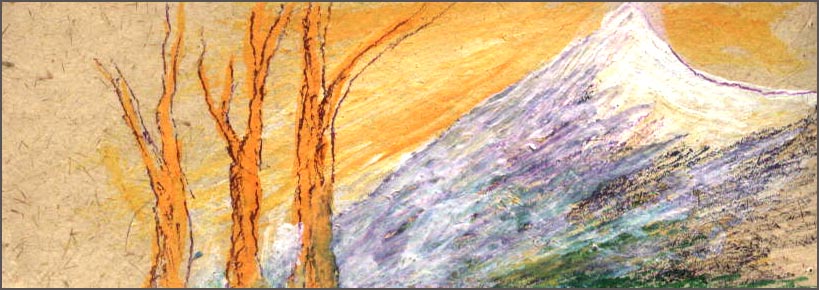

ANDHRA SCULPTURE Dr.Sanjiva Dev |
The former is to be found in Amara-vati,Jaggayapeta, Karlee, Nasika, Guntapalli etc.in these sculptures are visible the strength of the primitive ages together with some subtle sensibility. The images are large and are the type of bas relieve or low carving. This sculpture of the maha chaitya in amaravati is of the same type. After amaravati the name of Nagarjuna konda stands in eminence.nagarjunakonda belongs to ikshwakus (250-340 A.D.) who were feudal vassalas of the satavahanas.Both the satavahanas and the ikshwakas happened to the relatives too. The ikshwaka dynasty was founded by siri chanti mula; vijaypuri was their capital; although he was a follower of Brahmanism, his brother, by names hamm-asirinika and chanti siri were buddhist by faith. The sculpture of amaravati crawled to nagarjuna konda and many of the amaravati sculptures were repcated there. Buddha was sculpted here, at sriparvata, both as a human figure and a symbolic form. Although many of the ikshwaku kings were the followers of Brahmanism, their wives were the adores of Buddha and that was exquisite sculpture flourished there. Some figures in amaravati have the apparel of the Greek type while those in nagarjunakonda have that of seething type. The sculptors of nagarjunakonda sculpted diverse scenes. Not only religious subjects but also various secular themes found their expression in these sclupturers.In one of the sculptures is illustrated a scene in a which lady rejects the goblet of wine offered by her lover.The expression of her aversion is only worth to be pain-ted by the brush of a painter rather than by the chisel of a sculpture it is! Another sculpture at nagarjunakonda depicts an amorous couple. In this sculpture, on the left wrist of a lady |
has perched a parrot and the lady, who is in anguish,tries to offer some-thing to the parrot. Her lover standing beside her smiles in contentment.This sculpture resembles a scene described in the Sanskrit literary work entitled “Amarusatakam”.The sculpture of Amaravati is epical while that of Nagarjunakonda lyrical. The Andhra sculpture of Amaravati and Nagarjunakonda are world-renowned; these sculptures response in many museums of India and abroad like.In amaravati sculpture the figures are influenced by the greecogandhara style in which the strong realism of the tradition of Greek art and the subtle idealism of that of Indian art have beautifully blended themselves into each other. Blending of different traditions, styles and techniques would bring out marvelous effects in art and life alike. In the Pallava period (225-340 A.D) numerous sculptures of grace and artistic merit came into existence throughout the country.Especially the pallava sculpture of mahabalipuram has sprung into fame.There is dispute among historians regarding the nationality of the Pallavas.It does not matter where they were Andhra or not; it is true, they had ruled over Andhra too.Their capital was Kanchi-puram. Later on there flowed a current of sculpture in Andhra during the reign of Vishnu kundinis (350-610 A.D), kalinga gangas (5th century to 16th century A.D) western and eastern chalukyas (6th century to 13th century A.D) in multifarious theme and diversified treatments. But it was the sculpture produced under the kakatiyas (1089-1323 A.D), which had created a new chapter in the annals of Andhra sculpture. It has already been started in these pages that the amaravathi sculptures | were epics in stone and those of nagarju-nakonda were lyrics in stone;and now it can be started that the kakatiya sculptures are music in stone! After the fall of the Chlukya reign, their feudal vassals the Kakatiyas rose into power. Under the reign of Ganapatideva, his historic daughter Rudramadevi and her grandson Pratparudra,enormous artistic activity sprang up, culminating in the plethora of enchanting sculpture were Shiva’s and thus they erected numerous Shiva and sculptures were produced both on and in those temples. These temples containing marvelous sculptures are scattered in the districts of Warangal, Karimnagar, Nalgonda, Mahabubnagar etc.among those the more popular are the Ramappa temple at Palampet and various temples and the ruins of fort at Warangal. In kakatiya sculpture, one of the main characteristics has been the display of movement. Every figure seems to be vibrant with the rhythm of life. Kakatiya sculpture is dynamic albeit the stone, with which the sculpture was made, is static. The Andhra Buddhist sculpture is of white marble in contrast with the kakatiya sculpture, which is of black granite Some of the sculptures on the friezes of the Ramappa temple are like miniature paintings. Groups of woman-dancers accompanied by the orchestra players are full of swinging movement: their every movement is rhythmic. These miniature sculptures create an illusion of constant moving. Indeed blessed were those Kakatiya sculptors contain all subjects including god and goddesses, men and women, dancers and singers, pure ornamentals design etc. Kakatiya sculpture is a harmony of the classical and the folk sculptures both in theme and treatment. |
||